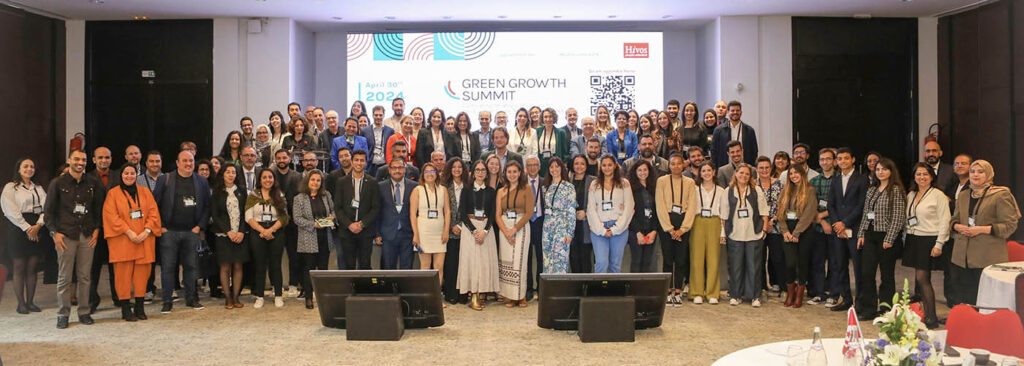Open Contracting for the Future: Three Frontier Issues
By Andrew Mandelbaum (Development Gateway) and Daniel Dietrich (Hivos)
The future of open contracting depends on the ability of governments and citizens to open up the entire public contracting cycle, create feedback channels, and use open contracting data to improve procurement results. But there remain a number of crucial issues that will advance or hinder the open contracting agenda in the years ahead. In tandem with the Open Contracting Global Summit kicking off tomorrow in Amsterdam, this post aims to explore some of these issues — we look forward to diving in with the community at the Summit over the next two days.
1. Improving understanding of open contracting’s impact through a global research agenda
Open contracting’s continued success depends on its ability to benefit stakeholders. Unlike some other sectors within the open data/governance spheres, open contracting offers a vast amount of actionable data and increasingly clear metrics that can be analyzed to determine whether anticipated results were achieved. From comparing statistics about the bidding process to tracking anticipated costs versus actual payments, analyses of open contracting data can support improved procurement performance, participation of citizens and communities in the planning, increased value for money, and reduced corruption.
Open contracting starts by enabling stakeholders to participate in the planning phase, analyze tendering and awarding of contracts, and monitor implementation and delivery of public goods, works and services. Open contracting can enable local civil society groups to monitor progress of development goals (e.g. number of schools built, and whether or not the right materials were used), raising the possibility of helping citizens to see the impact of public spending from budgeting to finished product.
In the coming years, a key priority for the open contracting community is building a body of evidence to help stakeholders who are directly involved in government procurement processes understand open contracting’s concrete benefits. Therefore Development Gateway, Hivos, B-Team, DigiWhist, and the Open Contracting Partnership have formed a consortium that is using a two-tracked approach to exploring the impact question.
First, we aim to understand the advantages to governments that move beyond e-procurement toward opening the entire contracting cycle for participation and public scrutiny and publication of open and structured data. To assess this question, we’ll seek to identify value added in terms of increased competition, better planning and delivery of goods and services, improved development outcomes, reduction of bidding price and time, and fighting corruption.
Our second research question revolves around the impact of open contracting on individual firms. We’ll seek to understand if it reduces barriers to participation (including the time and resources required to bid on contracts), how it impacts small and medium enterprises’ access to markets, and how, in turn, these results might affect the quality of competition and innovation progress in national economies. As open contracting seeks to increase public confidence in procurement markets, we’ll aim to assess how perceptions of public markets change over the period of open contracting implementation.
At Open Contracting 2017, the consortium partners will be looking for feedback on this research agenda and to explore how others within the open contracting community may be able to join us in supporting these objectives.

2. Enabling research on advanced analytics
Open contracting has improved the ability of researchers to access procurement data in a useful format. This has enabled organizations in civil society, academia, and the private sector to develop tools and apply research methods for monitoring corruption risk in procurement markets. This work has shown promise for detecting risky contracting processes and helping to better understand how corruption and financial mismanagement are manifest in public markets. Sharing research, learning, and evidence around these issues is vital moving ahead.
A key challenge to researchers and practitioners on corruption risk is the lack of high value training sets that can be used to test our models and assumptions of corruption in procurement. Such training sets would ideally contain (hundreds-of-)thousands of audited contracts, with some shown to have been corrupt, and others clean. It would contain access to court case data, including proven convictions, in an open format (as in Romania). These data sets are particularly useful for the advancement of machine learning and artificial intelligence techniques, which are most effective in detecting patterns of corruption when they understand what to look for.
While we can use machine learning and statistics to advance our knowledge and understanding of corruption risk at present, the establishment of such a training set would advance our collective abilities to identify malfeasance, even where data collection is suboptimal. Exploration of these tools and techniques is an exciting element of the open contracting puzzle that would benefit from further investigation.
3. Integrating OCDS into the e-Procurement decision making process
For governmental and non-governmental procurers, adopting e-Procurement is a no-brainer: it reduces the laboriousness and inefficiency of paper-based systems, while improving competitiveness through the publication of all tenders on a centralized portal. Because e-Procurement systems facilitate data collection from the very beginning of the procurement process, integrating the Open Contracting Data Standard (OCDS) – the core technical standard for open contracting – into the e-Procurement system maximizes the utility and sustainability of OCDS. Ensuring that OCDS is part of the e-Procurement system, and not simply an add-on, is a critical advancement that the open contracting community must make.
A critical decision point for open contracting comes during the purchasing process of an e-Procurement system. Data-driven systems can relatively easily convert data to the Open Contracting Data Standard (OCDS) and publish it. Document-based systems, on the other hand, may have a limited capacity to publish in OCDS beyond the metadata attached to documents. Some donors, such as the World Bank and European Bank for Reconstruction and Development, have demanded OCDS publication as a requirement of systems purchased with donor funds. But the evaluation procedures used in the purchasing of e-Procurement systems are often based on price, not quality, which might prevent the full-fledged publication of data in OCDS.
While e-Procurement systems of the future would ideally integrate OCDS at the core (as does Ukraine’s heralded ProZorro), the open contracting community should encourage adoption of data-driven e-Procurement systems that enable full OCDS integration. At the same time, these tools could create feedback channels that can be used by citizens and others to notify oversight authorities of potential issues in the procurement process.





